Over the years I’ve learned about developing Yaupon holly by doing the wrong thing (see “Developing Yaupon holly” for details). This year is no exception.
For the last five-to-ten years, I’ve been neglecting the tree or occasionally pruning it to silhouette without thinning or wiring it. I knew this was not a good approach to maintaining the tree, but I rarely found the time to finish the work after getting started. Here’s a look at what this approach yields.
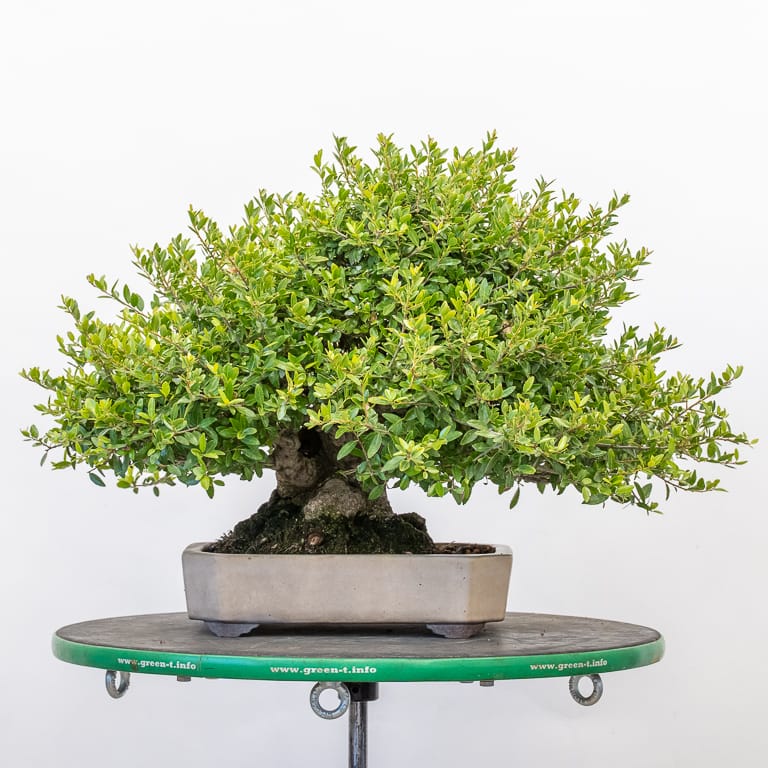
Yaupon holly in need of a haircut
To get the tree back on track, I began by pruning back to create a rough silhouette.
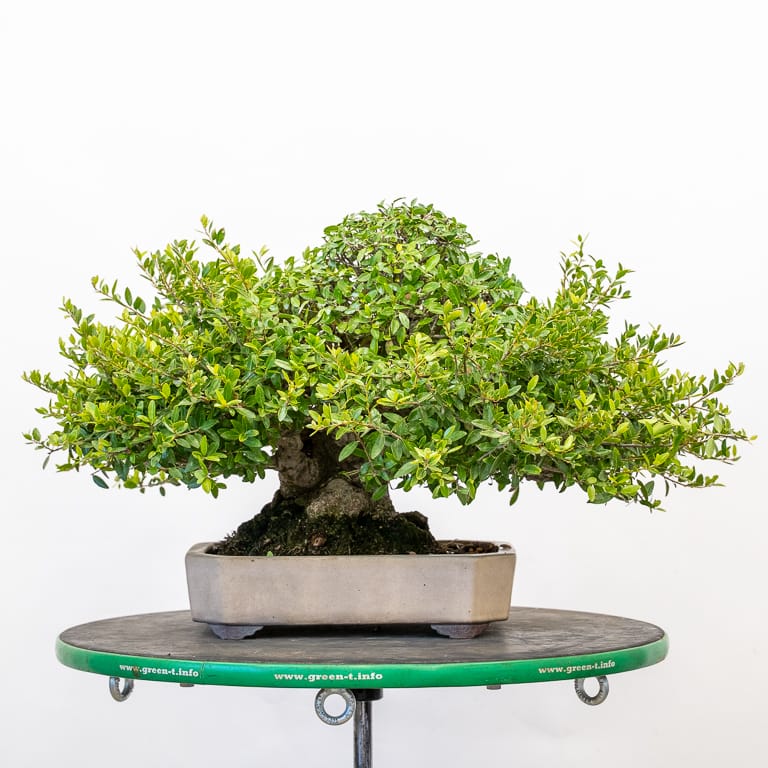
After cutting back the apex
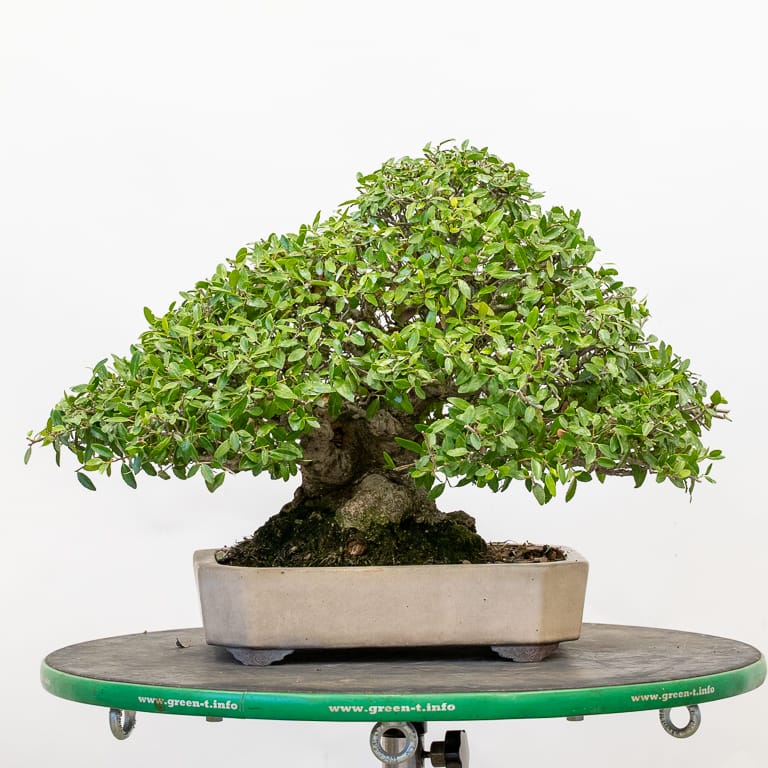
Cutback complete
This is the approach I took the last few times I worked on the tree. Doing this year after year creates two big problems. First, by leaving too many leaves at the ends of the branches, the interior branches fail to receive the light they need to grow. Over time, this leads the interior branches to die off.
The second problem is that there is no way to improve the tree’s branch structure. Because Yaupon holly branches harden after just a few years, bending them more than a few degrees quickly becomes impossible.
The appropriate next step after cutting back a tree to silhouette is to thin the foliage to the point where light can reach the tree’s interior. In this case, I pruned back as far as I could while still leaving one or two leaves at the end of each branch.
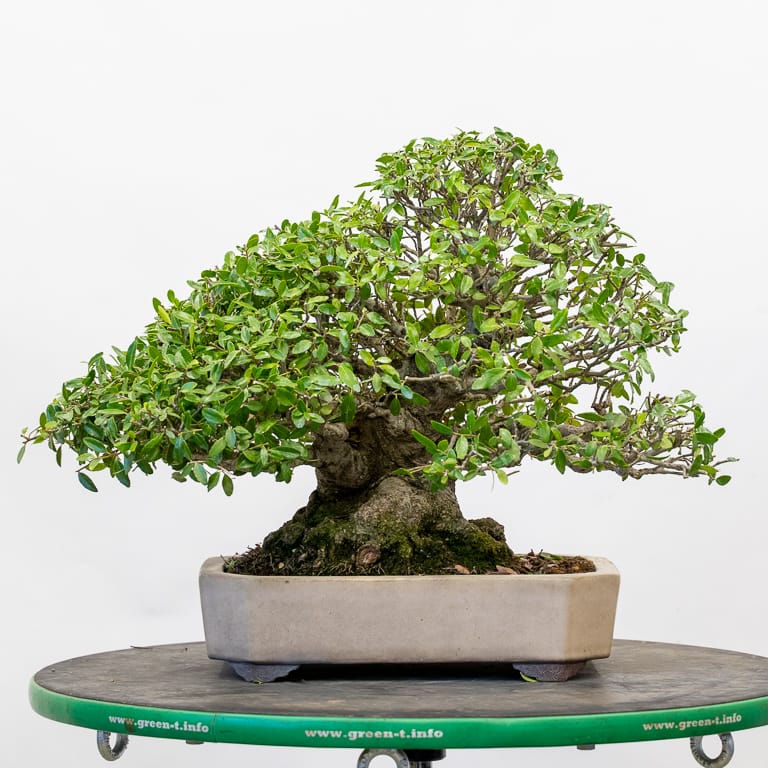
After thinning the right side
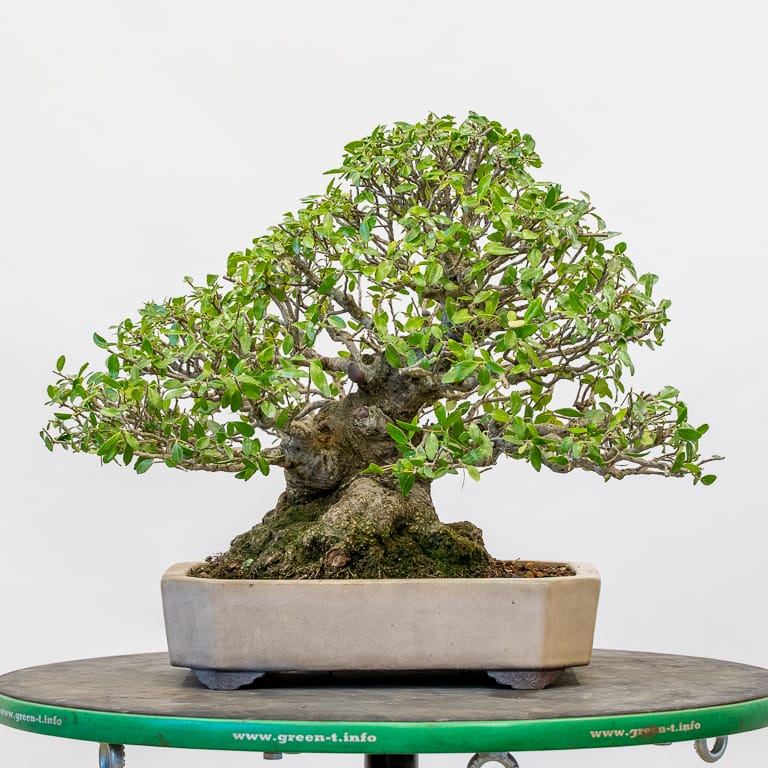
Thinning complete
From here it was easy to see the flaws in the branch structure. I removed most of the branches that grew straight up or back towards the center of the tree and wired the branches that were thin enough to bend.
It didn’t take long for me to remember how hard it is to wire Yaupon holly. The larger branches don’t move very far before breaking and the smaller branches snap off when you bump into them the wrong way. Working as carefully as I could, I wired most of the branches.

After wiring the lowest branches
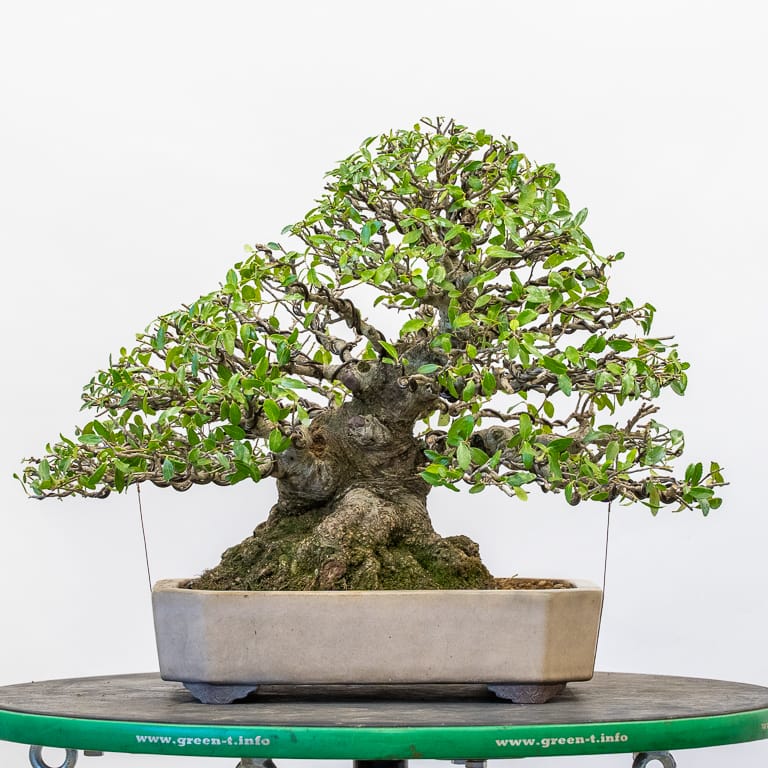
Wiring complete – 13″
I wasn’t able to create the silhouette I have in mind for the tree as some branches were the wrong length and others were too thick to bend. Over time, I hope the tree will produce back buds that will let me prune more effectively and provide the flexibility to wire the branches into a more appealing form.
The goal is to create a silhouette that does a better job of showing off the tree’s branch structure. Will report back when it’s time to take these next steps!
Subscribe to Bonsai Tonight
New Posts Delivered Every Tuesday and Friday
Carol Novak says
Thank you for posting this—it’s hard to find information on yaupon holly bonsai. You are so very right about how difficult it is to find the sweet spot in wiring; I lose many little branches. Your post reassures me it’s better to risk little backwards steps so as to have the best structure in the future!
Jonas Dupuich says
Thanks, Carol! I agree about the little steps backward – they can be worth it as long as the tree keeps moving in the right general direction. Good luck with the wiring!
Mike Butler says
Jonas I am glad you posted this update, I had been wondering about that one. Just for reference how big is the pot you have moved it to? They are one of my favorite shrubs to use. Here in Texas they are native and literally grow like weeds. I think they are a perfect first tree. Tolerate almost any conditions and bounce right back. They make great big bonsai and great mini as well. Plus they start easily from cutting and layering. They will literally bud from anywhere and the harder you cut the more the bud! They do grow absolutely straight as an arrow which is probably the only real drawback . Great tree Jonas and thanks for posting.
Jonas Dupuich says
Thanks, Mike! The pot is pretty small for the tree at 10.5″ x 8″ x 2″ (inside dimensions), but it seems like it’s been growing well since I repotted it in winter. I potted it down ahead of a planned exhibit but I may move it to a bigger pot if it doesn’t respond well to the cutback.
I completely agree about the tree’s utility as bonsai and particularly for beginners. If the weather is right, they are a forgiving species!